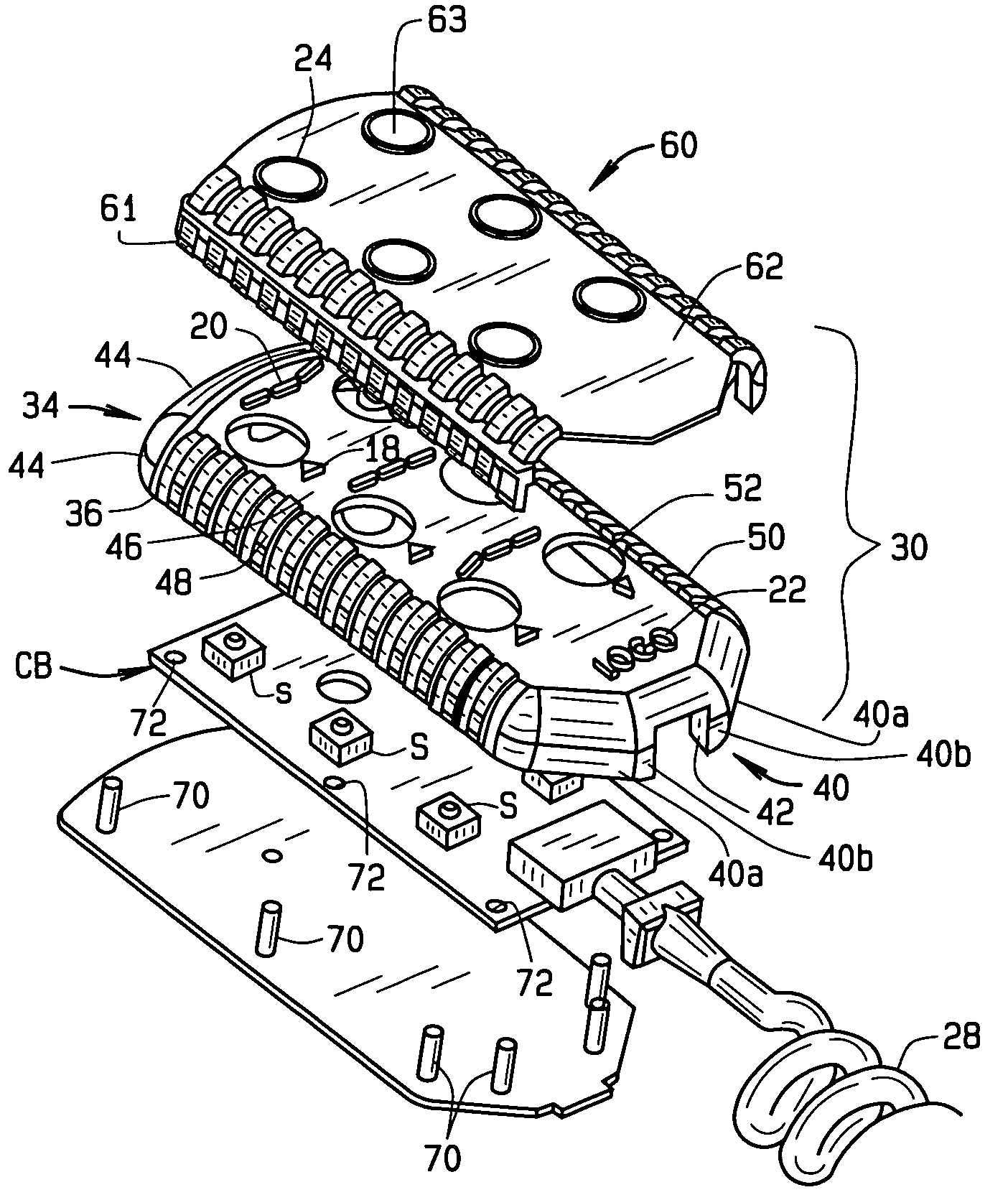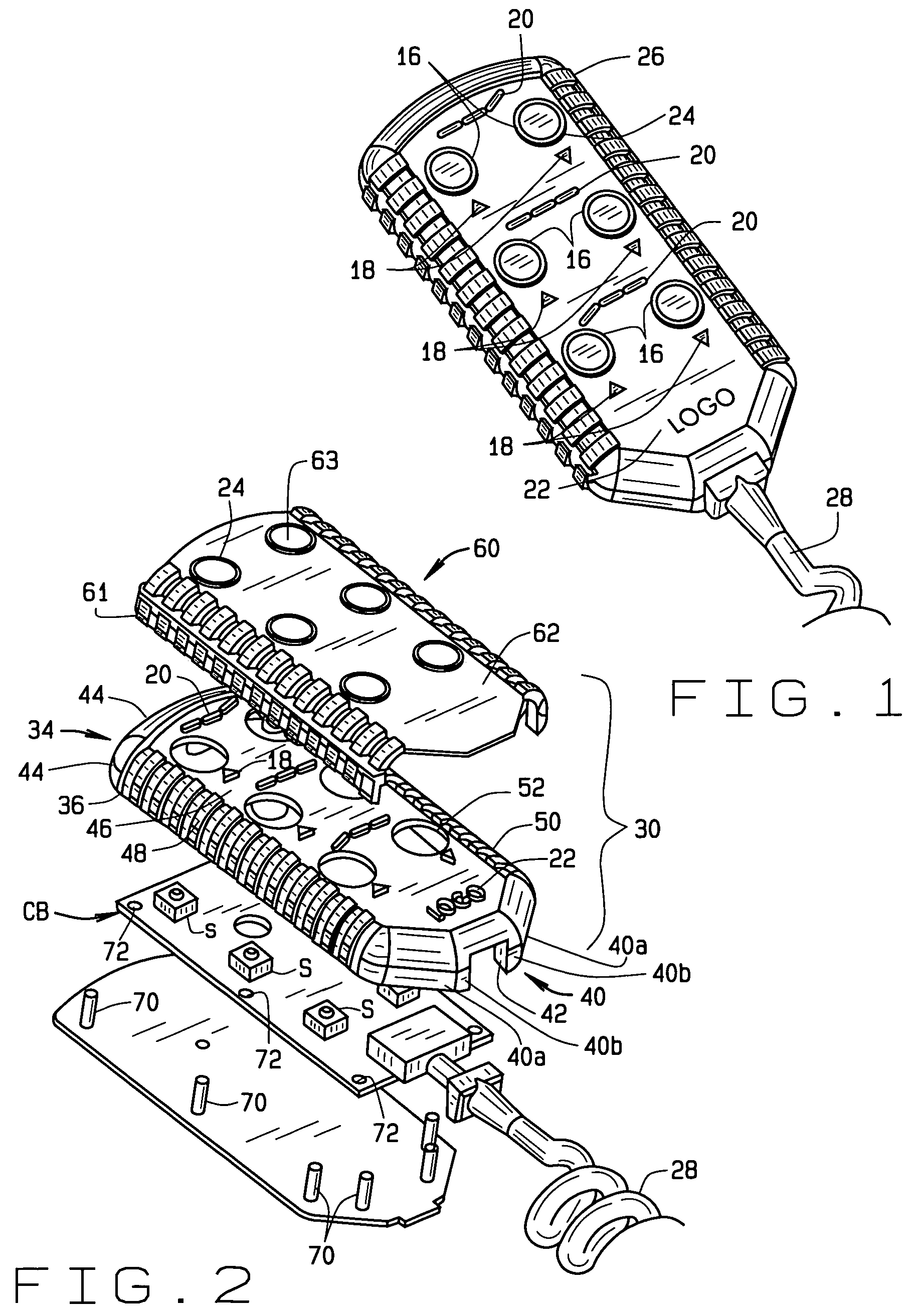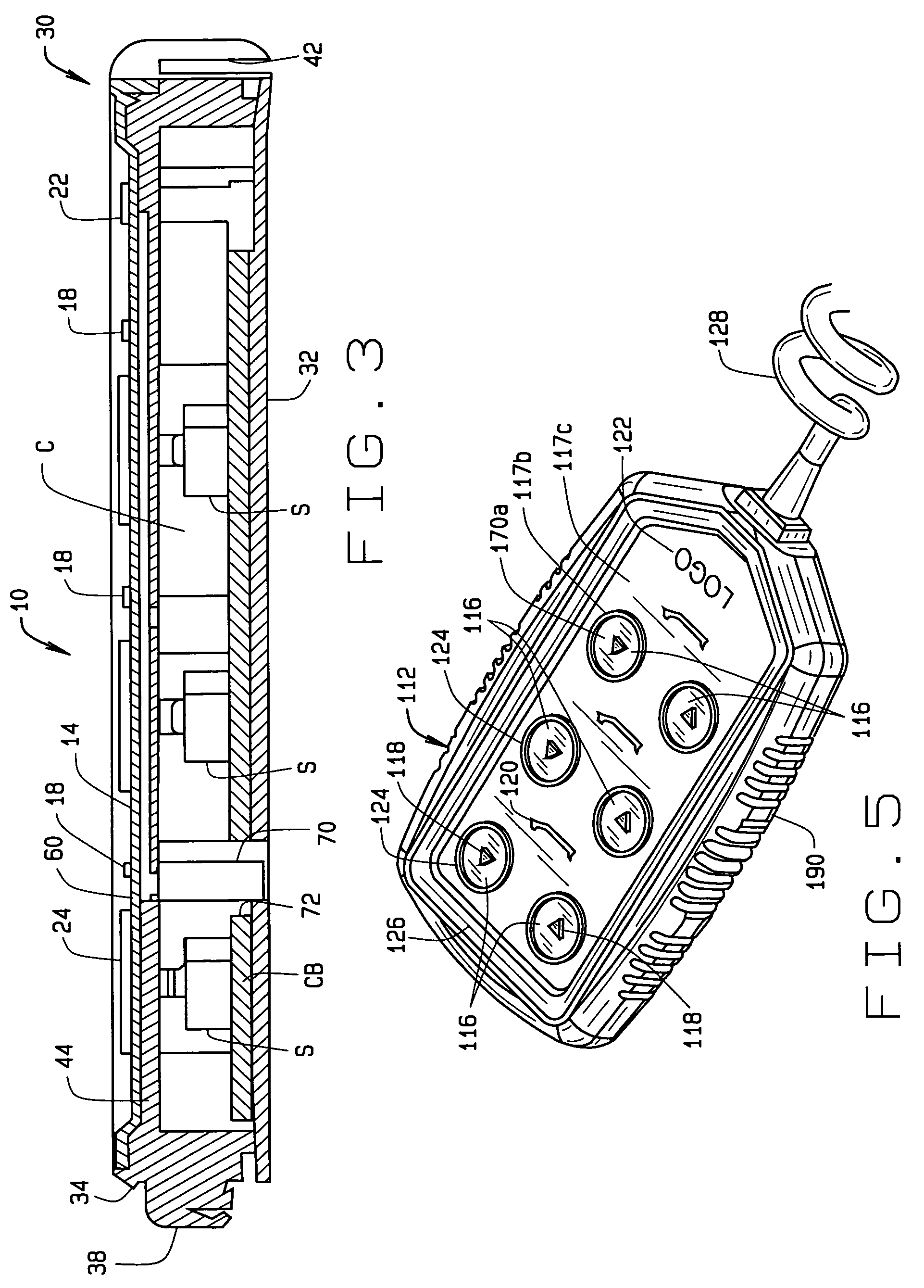Control housing and method of manufacturing same
a technology of control housing and control panel, which is applied in the field of control housing, can solve the problems of inability to sterilize contaminants that may have entered the pendant itself, wear of printed insignia, and small crevices or gaps around the pendant's buttons, and achieve the effect of convenient cleaning
- Summary
- Abstract
- Description
- Claims
- Application Information
AI Technical Summary
Benefits of technology
Problems solved by technology
Method used
Image
Examples
first embodiment
[0033]the pendant is shown in FIGS. 1–3. The pendant 10 includes a housing 12 having a front face 14, a back, and side walls which define a cavity C (FIG. 3) in which a control board CB (FIG. 2) is mounted. The pendant includes a series of buttons 16 on the front face 14. First instructional insignia 18 in the form of up and down arrows is provided near each button 16. A second instructional insignia 20 also is provided near each set of buttons to indicate the function of the button. Illustratively, in FIG. 1, the first instructional insignia 18 is in the shape of up and down arrows and is positioned centered and below its respective button. The second instructional insignia 20 is positioned above and between its respective buttons. Thus, in the pendant shown in FIG. 1, the top set of buttons control the position or angle of the head of the bed; the middle set of buttons control the bed height; and the bottom set of buttons control the position or angle of the foot or end of the bed...
second embodiment
[0043]the pendant is shown in FIGS. 5–7. The pendant 110 includes a housing 112 having a front face 114, a back, and side walls which define a cavity in which a control board CB (FIG. 6) is mounted. The pendant includes a series of buttons 116 on the front face 114. First instructional insignia 118 in the form of up and down arrows is provided on each button 116 and second instructional insignia 120 is provided adjacent each set of buttons to indicate the function of the button. Additionally, an identifying insignia 122 can be provided which includes a logo, trademark, or the like which identifies the pendant. The buttons 116 can each include a raised rim 124 around the circumference of the button. Such a rim makes it easier, for example, to locate the buttons in dim light and for physically impaired patients to locate the buttons and reduces the possibility of accidental activation of the unit, for example, when the unit is dropped or when something is dropped on the unit. Addition...
third embodiment
[0060]the pendant is shown in FIGS. 10–12. The pendant 310 is generally similar to the pendant 110, however, its button layer does not include a channel to receive an insignia insert. In this embodiment, as explained below, the two operating insignia are the same color. However, the identifying insignia can be a different color.
[0061]The pendant 310 comprises a housing 312 which includes a backing or bottom 314 and a cover 316. The cover 316, in turn, comprises a body 318, a button insert or plate 320, and a casing 322. The housing 312 holds the control board CB to which the optional cord 324 is connected. The cord, as is common, includes a strain relief 326 at the junction between the cord and the housing and a head 327 from which a connector extends to mates with a receptacle on the board CB, as is known. The head 327 includes a hole 328. When the pendant is assembled, the head hole 328 is passed over an alignment pin, as will be described below.
[0062]The control board CB includes...
PUM
 Login to View More
Login to View More Abstract
Description
Claims
Application Information
 Login to View More
Login to View More - R&D
- Intellectual Property
- Life Sciences
- Materials
- Tech Scout
- Unparalleled Data Quality
- Higher Quality Content
- 60% Fewer Hallucinations
Browse by: Latest US Patents, China's latest patents, Technical Efficacy Thesaurus, Application Domain, Technology Topic, Popular Technical Reports.
© 2025 PatSnap. All rights reserved.Legal|Privacy policy|Modern Slavery Act Transparency Statement|Sitemap|About US| Contact US: help@patsnap.com



